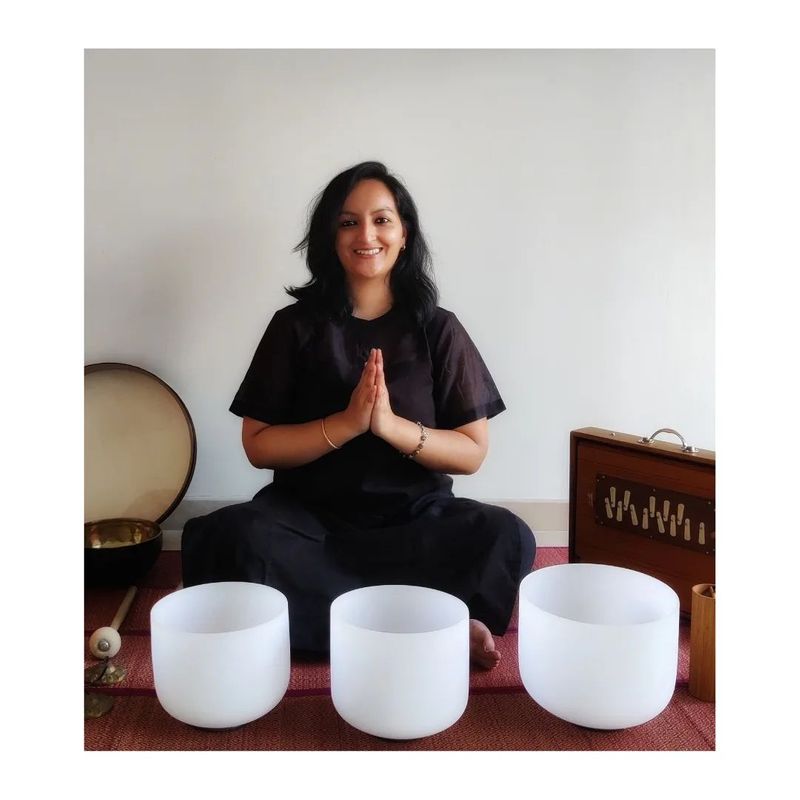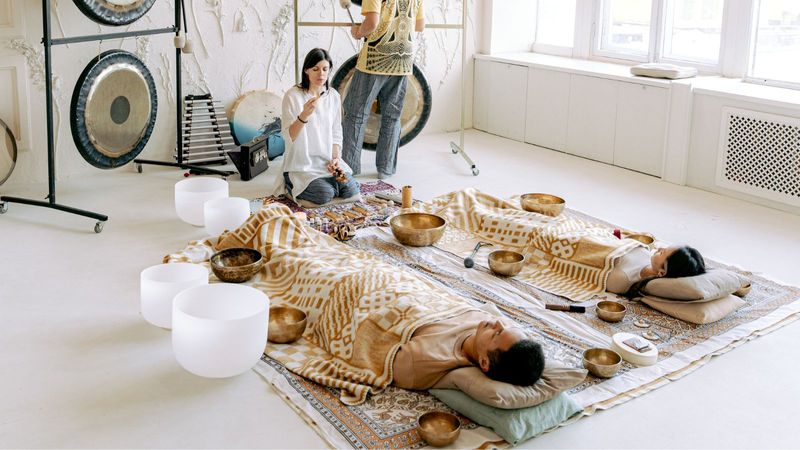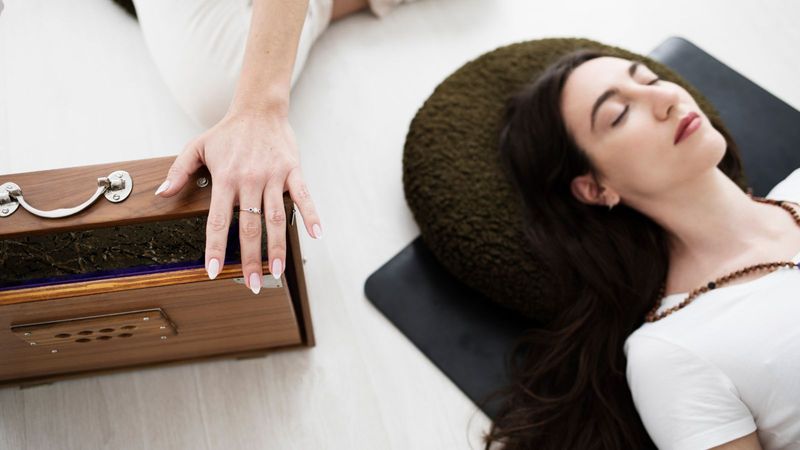I first heard about sound baths in 2020, when British singer-songwriter Adele told an international publication how ‘sound bath’ was one of the activities that helped her cope with anxiety. A quick research reveals that a sound bath is a meditative experience where you listen to different types of sounds created by instruments like Tibetan metal bowls, gongs, and wind chimes. Also, it's a Hollywood celeb-favourite therapy.
Cut to 2022, on a rainy Sunday mid-morning, I was sitting on a yoga mat, at the Tangerine Arts Studio in Bandra, waiting for a sound bath session with Mumbai-based sound therapist and reiki practitioner Aparna Sundar to begin. Based on my limited knowledge of this healing therapy, I was prepared to chill out on the mat (there were pillows and blankets, what else could I expect?) and listen to these amazing instruments.

What is a sound bath?A sound bath is a type of meditation where the practitioner plays various instruments, overtone emitting instruments that have resonance and deep vibrations. These vibrations help the participant get into a state of deep relaxation. It helps their brain waves get from a beta state to an alpha or theta. It is a feeling of falling asleep without doing so, a kind of a dream state experience. And that’s the state where a lot of healing and transformation happens. Benefits: 1. Deep relaxation 2. Relieves stress 3. Improves sleep 4. Improves mood and well-being |
While Aparna set up the sound bath instruments, she gave all participants a heads up that the different sounds may impact everyone differently. While a few may be calming, others may evoke a plethora of emotions. Some may even doze off. And it turned out to be true. Fifteen minutes into the session, the gentleman on my right was in a deep sleep, happily snoring, and the lady on the left was in a deep meditative state. “Try not to analyse what you feel or sense, just go with the flow and let the sound do its job,” Aparna instructed.
As for me, I am a self-conscious person with an extremely short attention span. So, I took 10-15 minutes to immerse myself into this session. Throughout the hour, I listened to the sounds of a shruti box, a harmonium-like instrument, ocean drum, wind chime, and crystal and metal singing bowls, among others. A sense of heaviness that I felt on my chest during the beginning of the session, began to lighten and my eyes were filled with tears during the second half of the sound watch. I wanted to cry but there was no explanation as to why.

What followed was a sense of calmness. For the last 15 minutes, I zoned out and focused on my breathing and let my mind wander with the varied sounds. It was in the last 7-8 minutes when I started experiencing the power of sound, and its effects. Unfortunately, time was up. In the end, my mind was free of random thoughts, and I felt relaxed. But at the same time, I felt I hadn’t reached a conclusion. Maybe just a few more minutes? “Next time you opt for a two-hour sound bath,” I told myself, “Or maybe I’ll prep better so I am ready to focus faster.”
Post the sound bath, I requested Aparna, who has been practicing sound healing therapy for the past six years, for a quick chat to help me understand the sound bath and its nuances better. Edited excerpts:
1. What is deep listening in a sound bath?
There is a lot of conversation around mindfulness these days, and deep listening helps you on that path. Deep listening involves consciously listening to anything – from the beat of a drum or a single note on a singing bowl or piano. The vibrations that are emitted, the sound, and the resonance that you experience, they bring peace to you.
Deep listening doesn’t mean listening to music while driving a car or going to a concert. Deep listening during a sound bath is different. When you’re attending a concert, your brain is constantly engaged but in a sound bath, you are trying to relax your brain.

2. How does a sound bath help a person?
Scientifically, it helps lower the brain waves, down to theta or delta. That’s the state the Tibetan monks are at. No matter the amount of chaos around you, you can access that level of relaxation within you.
Spiritually, it helps you become a positive person. Small things stop bothering you, and sound baths help you manage your emotions better. It won’t make you a saint, that’s not the goal, but it helps you change your outlook towards life. So that you are less stressed in your daily life.
It is said that more than 80 per cent of ailments such as cancer, diabetes and other lifestyle-related diseases and illnesses, are aggravated due to stress. When we reduce stress, these issues may also get resolved. Also, it [sound bath] works on different layers such as emotional, spiritual, physical, and mental. Hence, a sound bath is called a holistic treatment.
3. Can you take us through the instruments that are used in a sound bath?

Our body is composed of four elements – air, water, fire, and earth. These elements help bring our bodies to balance. In the sound bath, the Tibetan bowl represents fire; drumbeats, rattles and brass bowls represent earth, wind chimes represent air; and ocean drum and rain stick represent water.
My favourite is the quartz crystal singing bowls because they have a pure frequency and tone. So, the sound that is emitted is like a crystal. It has a cleansing effect on your mind and your body. For instance, many people experience clearing of their sinuses.
4. How often should one practice sound bath?
I would suggest practicing sound bath at least once a week. You may think it is just listening, so how am I going to benefit? But it works the same yoga and meditation, the more you do it, the better you get at it.
If it is just for general relaxation then I recommend once a week, or a couple of times a month. But sound healing also helps with specific issues such as chronic pain or insomnia, or anything deeper than general relaxation, then the practitioner can personal the session based on the client’s needs.
5. How do sound bath experiences differ from person to person?
Sound healing is subjective. It’s just like listening to music – a track that you love may not appeal to another person. Similarly, some people love the sound of crystal bowls, others love the rain drum, while a few would complain of headaches after listening to a certain instrument.
It also depends on the state of mind that you are in at the time and your surroundings. The experience may differ from session to session too.



